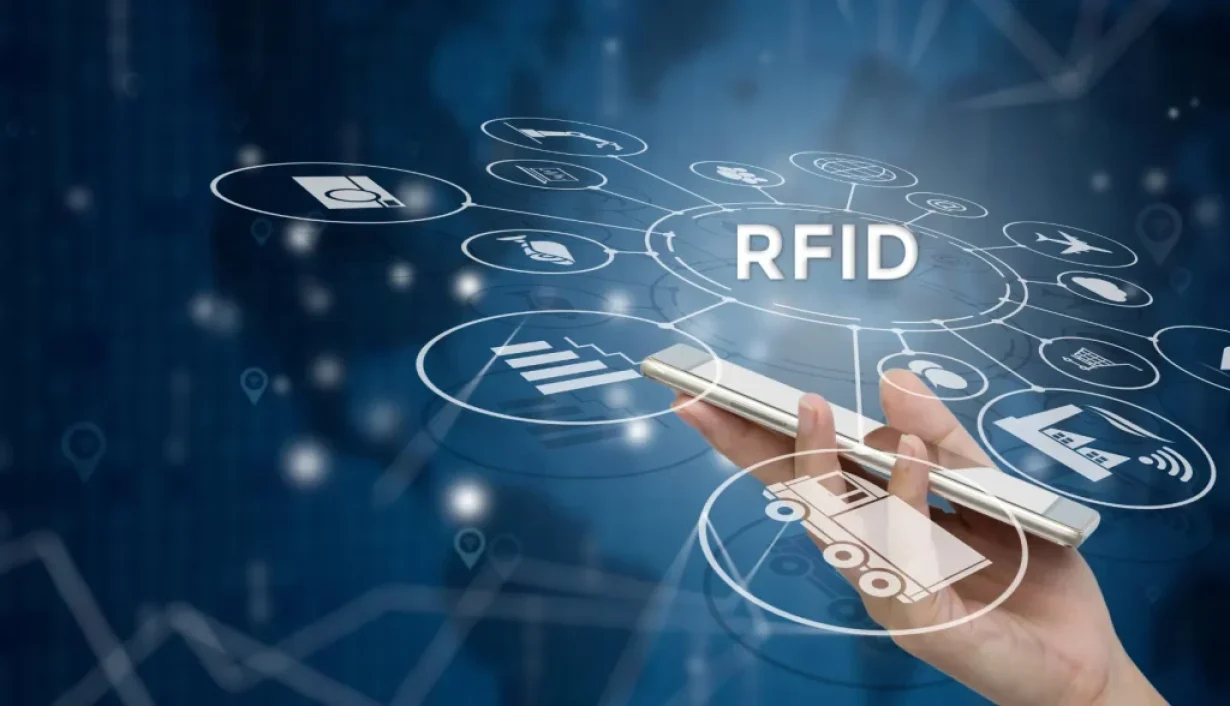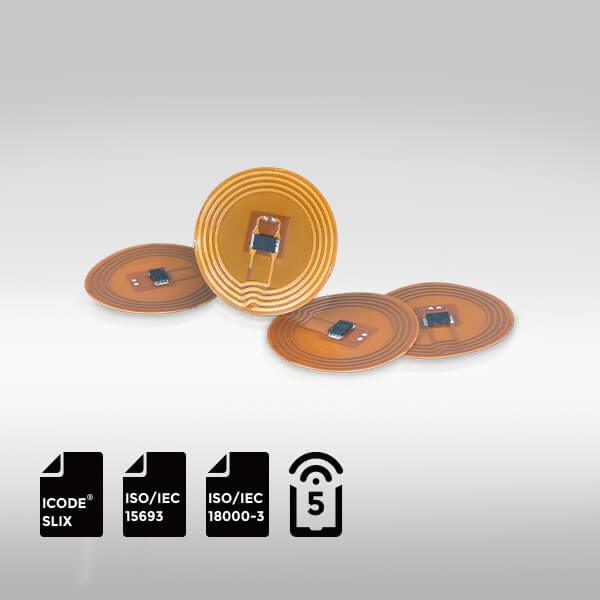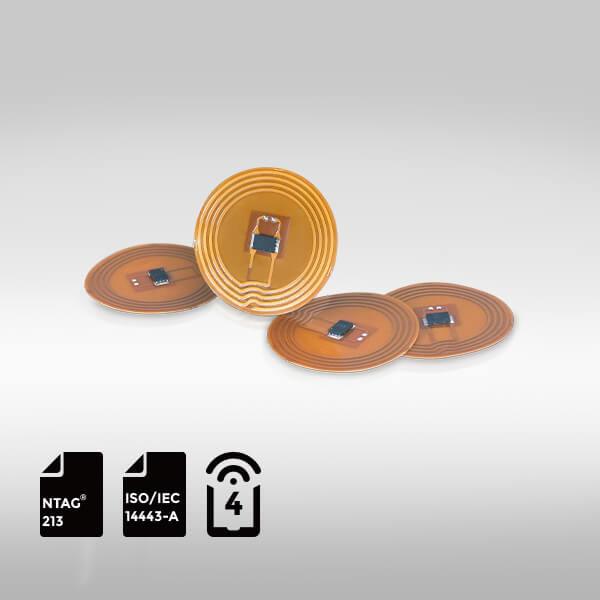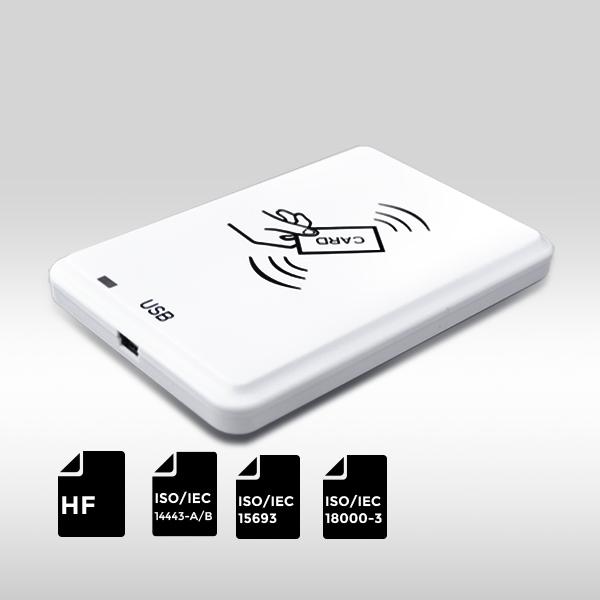
Recent market analysis indicates a robust expansion in the Radio Frequency Identification (RFID) sector. Data suggests that the global RFID market, valued at USD 16.8 billion in 2024, is projected to experience a compound annual growth rate (CAGR) of 12.7% from 2025 to 2034.
RFID technology facilitates rapid data exchange without physical contact, leading to its extensive adoption in inventory control, asset management, and advanced logistics solutions. Continuous technological advancements are enhancing the efficiency and accuracy of RFID systems, highlighting their significant potential across diverse industries.
What is an RFID System?
Radio Frequency Identification (RFID) is a technology that employs radio waves to transmit data and identify objects and devices. Unlike barcode systems, RFID does not require direct contact or a line of sight for data retrieval, making it particularly suitable for contemporary logistics, supply chain optimization, and asset tracking applications.
Components of an RFID System
An RFID system comprises three primary components: Tags, Readers, and Backend Systems. Each component fulfills a critical function within the overall system architecture.
RFID Tags
RFID tags are compact devices affixed to items, containing a unique identifier capable of storing object-related data. Based on their operational characteristics, RFID tags are classified into three categories:
Active Tags: Active tags incorporate internal batteries, enabling them to actively transmit signals. These tags typically offer an extended reading range, often spanning several meters or more, making them appropriate for high-value assets requiring continuous, real-time monitoring.
Passive Tags: Passive tags lack internal batteries. They derive power from signals emitted by readers to activate their internal chips for data transmission. These tags are more economical, rendering them suitable for large-scale deployments such as inventory management.
Semi-Active Tags: Semi-active tags also include batteries but activate and transmit data only upon receiving a signal from an external reader. Their primary applications often involve environments necessitating long-term monitoring, such as logistics transportation.
RFID Readers
RFID readers are responsible for receiving signals transmitted by tags and relaying the acquired data to the backend system. Depending on the application context, RFID readers can be either fixed or handheld. Fixed readers are typically installed at entry and exit points to monitor item flow, while handheld readers are frequently used in warehouse environments to facilitate goods scanning by personnel.
Backend System
The backend system constitutes the core of RFID technology, managing the reception and processing of data from readers, as well as data storage. The backend system integrates with other enterprise management systems (e.g., ERP systems) to enable automated inventory management and asset tracking. The efficacy of RFID hinges on the timely processing and analysis of data by the backend system.
Types of RFID Systems
RFID technology can be categorized by frequency into three types: Low Frequency (LF), High Frequency (HF), and Ultra High Frequency (UHF). Each frequency exhibits characteristics that make it appropriate for specific application environments.
Low Frequency (LF) RFID
Operating Frequency: 125-134 KHz
Characteristics: LF RFID signals possess strong penetration capabilities, capable of traversing materials such as metal and water. However, their reading distance is relatively limited, typically within a few centimeters. LF RFID also demonstrates good resistance to interference, making it suitable for complex environments.
Typical Applications:
- Animal Tracking: LF RFID tags can be implanted in animals to monitor their movement and health status.
- Access Control: LF RFID is widely used in access control systems to ensure that only authorized personnel can enter designated areas.
High Frequency (HF) RFID
Operating Frequency: 13.56 MHz
Characteristics: The reading range of HF RFID typically extends from a few centimeters to 1 meter, with a faster transfer speed and high data processing efficiency. HF RFID provides relatively robust reading capabilities and widely supports small to medium-sized devices.
Typical Applications:
- Library Management: Libraries commonly employ HF RFID tags for book management, enabling real-time tracking of borrowed items.
- Electronic Ticketing: Public transport systems, such as subways and buses, widely utilize high-frequency RFID for rapid and convenient payments and entry.
Ultra High Frequency (UHF) RFID
Operating Frequency: 860-960 MHz
Characteristics: UHF RFID offers the longest reading distance, typically reaching several meters or even tens of meters, and provides the fastest transfer speeds. It is well-suited for large-scale, high-efficiency applications and facilitates the rapid identification and management of a large number of items.
Typical Applications:
- Logistics and Supply Chain Management: UHF RFID assists companies in tracking the location and condition of goods in transit, making it extensively used in the logistics industry.
- Retail Management: UHF RFID enables retailers to achieve rapid inventory counts and precise stock management.
Main Applications of RFID Technology
RFID technology has permeated numerous industries, and as the technology matures and market demands increase, its application scope continues to expand. Below are some specific applications of RFID across various industries.
RFID Applications in Retail
Retailers primarily use RFID for inventory management, product tracking, and anti-theft measures. By using RFID tags, retailers can gain insights into their inventory levels, reduce discrepancies, and improve the accuracy of inventory management.
Inventory Management: RFID provides real-time inventory data, reduces stockpiling and out-of-stock occurrences, and optimizes inventory levels.
Smart Shelves: RFID technology allows for automatic updates of inventory information on shelves, enabling consumers and staff to easily understand sales and stock status.
Logistics and Supply Chain Management
Logistics and supply chain management widely apply RFID technology, particularly for real-time tracking, item tracking, and inventory optimization. RFID can significantly enhance logistics efficiency and reduce human errors and lost goods.
Cargo Tracking: With RFID, logistics companies can know the real-time location of their cargo, preventing misdeliveries and delays.
Transport Route Optimization: RFID helps companies track goods in transit and optimize delivery routes and scheduling based on data.
Warehouse Management: RFID streamlines warehouse management through automatic identification and tracking of goods, enhancing efficiency.
RFID Applications in Healthcare
RFID technology in the healthcare industry focuses mainly on patient identification, medical equipment management, and drug tracking. By using RFID, hospitals can ensure the accuracy of patient information and the effective use of medical equipment.
Patient Identity Management: Hospitals use RFID tags on patient wristbands to ensure the patient’s identity corresponds with their medical records, reducing medical errors.
Medicine Tracking: RFID technology allows for tracking of the storage and usage of medicines, preventing counterfeit products from reaching the market.
Medical Equipment Management: RFID helps hospitals manage the location and usage of equipment, minimizing the risk of loss and misuse.
Smart Manufacturing and Industry 4.0
In the context of smart manufacturing and Industry 4.0, RFID technology is becoming an essential tool for achieving factory automation, optimizing production lines, and quality management. Through RFID, companies can achieve more precise production and more efficient resource utilization.
Production Line Automation: RFID aids in identifying and updating the status of items on automated production lines, thereby improving production efficiency.
Quality Control: RFID can help monitor the production process in real-time, ensuring that each stage meets quality standards and allowing for timely adjustments to production flows.
Main Benefits of RFID Technology
RFID technology brings significant benefits to various industries, particularly in enhancing efficiency, reducing costs, and improving security.
Boosting Efficiency
RFID can automate data collection, minimizing human intervention and enhancing operational efficiency. With RFID technology, businesses can access real-time inventory data, reduce stockpiling and excess, and avoid errors that come with manual data entry.
Cutting Costs
By reducing inventory discrepancies and minimizing the time spent on manual scanning, RFID technology helps companies decrease operating costs. Businesses can automate inventory management and item tracking through RFID, cutting down on unnecessary human intervention and management expenses.
Enhancing Security and Tracking Capabilities
RFID technology can improve anti-theft and anti-counterfeiting measures, helping companies track products throughout their entire lifecycle. Each step can track the item in real-time, from production to sale. By monitoring items closely, businesses can better protect their assets and prevent loss or theft.
Environmentally Friendly and Sustainable
RFID technology can reduce environmental impact by utilizing low-power and reusable tags. Many manufacturers make RFID tags from eco-friendly materials and design them for low energy consumption, promoting efficient resource use.
Conclusion
The application of RFID technology is becoming increasingly widespread across various industries, from retail to logistics, and from healthcare to smart manufacturing. RFID technology plays a crucial role in enhancing efficiency, reducing costs, and improving security. As technology continues to evolve and markets expand, RFID will remain a key player in the global economy. By understanding the components, types, applications, and benefits of RFID systems, businesses can leverage this technology to enhance their competitiveness and drive future growth.
FAQs
Can RFID technology be used for personal privacy protection? How can we avoid misuse?
While RFID technology has a wide range of applications in many fields, its potential privacy issues have also raised concerns. Many countries and regions have established relevant regulations to protect personal privacy and prevent the misuse of RFID tag information. For example, RFID tags have a limited reading range and typically only activate when close to a reader, thereby reducing the risk of remote theft of personal data. Additionally, many RFID tags employ encryption technology to prevent unauthorized access. Consumers can also purchase RFID protection products with an off switch, such as RFID wallets and card sleeves, to effectively prevent theft of personal information.
What is the typical lifespan of an RFID tag?
The lifespan of an RFID tag depends on its type and usage environment. Passive RFID tags generally have a longer lifespan, ranging from 5 to 10 years, because they have no battery and do not contain complex electrical components, allowing them to function reliably in most environments. Active RFID tags, which contain a battery, have a limited battery life that typically lasts between 3 to 5 years, depending on the frequency of use and the size of the battery. Semi-active RFID tags have a lifespan that falls between the two, with a battery used to enhance signal transmission. Environmental factors such as temperature, humidity, and physical shocks can affect the lifespan of the tags.
Can RFID tags be used in extreme environments?
Industrial-grade RFID tags are designed to operate in extreme environments, but their performance and suitability depend on the tag type and specific conditions. These tags, made from heat-resistant and corrosion-resistant materials, are waterproof and dustproof, allowing them to function reliably in high temperatures, low temperatures, high humidity, and environments with strong chemical corrosion. For example, regular RFID tags may experience signal interference from metal surfaces, but durable RFID tags are specially designed to work in metal-surface environments. Additionally, some tags can withstand extremely low or high temperatures, making them suitable for cold chain logistics or high-temperature industrial applications. Therefore, choosing the right RFID tag ensures proper operation in various extreme environments.
Recommended products

ICODE SLIX NFC FPCB Tag

TAG213 NFC FPCB Tag

TAG 424 DNA NFC FPCB Tag

Integrated UHF RFID Reader


RFID Antenna UHF
15-Meter Cable for UHF RFID Fixed Reader
UHF Tag
4″x2″ 860-960MHz UHF RFID Label RFID M4D
UHF Tag
4″x4″UHF RFID Label Alien H3 | ISO18000-6C
RFID Antenna UHF
5-Meter Cable for UHF RFID Fixed Reader
HF Card
ABS RFID KEY-FOB Tag RFID Classic 1K
HF Card
ABS RFID KEY-FOB Tag RFID Classic 4K
HF Card
ABS RFID KEY-FOB Tag RFID Ultralight C
HF Tag
ABS RFID KEY-FOB Tag RFID Ultralight EV1
LF Card
ABS RFID KEY-FOB Tag ATA5577
LF Card
ABS RFID KEY-FOB Tag EM4200
HF Card
ABS RFID KEY-FOB Tag EM4305
HF Card
ABS RFID KEY-FOB Tag RFID TAG 213